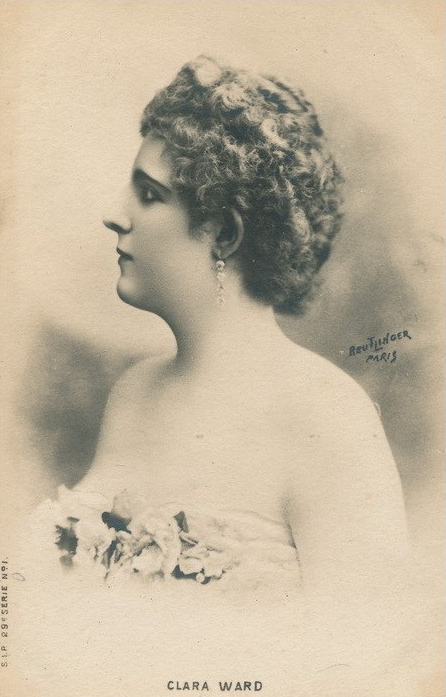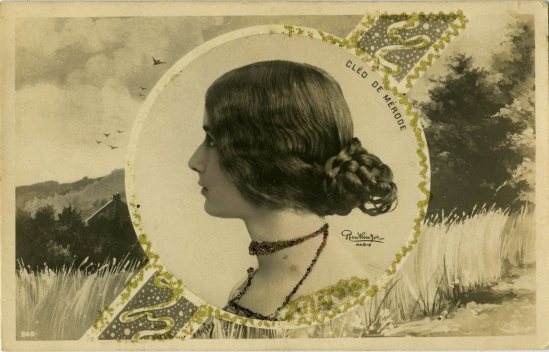The story of Clara Ward (1873 – 1916) is poorly known today, but in the early 1890s she was the toast of the United States.
She came to the public’s attention in 1889 or early 1890 when it was announced that the distinguished Belgian visitor to the United States, Marie Joseph Anatole Pierre Alphonse de Riquet, Prince de Caraman-Chimay, a member of the Belgian Chamber of Deputies, had proposed marriage to the very young, very attractive daughter of a very wealthy family.
That her husband-to-be was more than twice her age, quite poor, and even, perhaps, not very handsome, seems to have been of minor consequence.
They were married on 19 May 1890, in fin-de-siècle Paris. Ward was now properly styled “Princesse de Caraman-Chimay”, but usually went by “Clara, Princess of Chimay”. Americans were ecstatic about their new princess.
Some time after the birth of their second child, probably in 1896, the Prince and Princess Chimay were dining in Paris, at what may be expected to have been a suitably elegant establishment. Present at the restaurant was a Hungarian, Rigó Jancsi, who eked out a living providing Gypsy music.
After a series of secret meetings, Ward and Rigó eloped in December 1896. The Prince and Princesse de Caraman-Chimay were divorced on 19 January 1897. The new couple married, probably in Hungary.
Not too surprisingly, Clara Ward, still usually called the Princess Chimay, soon found her resources dwindling. The never-very-full Chimay coffers were certainly closed to her, and although Ward was resourceful, her American family had to intervene from time to time to straighten out her tangled finances.
Her main talents were being beautiful by the standards of the time, and being famous. She combined the two by posing on various stages, including at least the Folies Bergère and probably also the Moulin Rouge, while wearing skin-tight costumes. She called her art-form her poses plastiques.
Perhaps the income from this odd occupation was sufficient for the couple to live reasonably well. The idyll was not to last, Rigó being unfaithful to her. They were divorced fairly soon after their marriage, either shortly before or after Ward met her next true love, one Peppino Ricciardo, sometimes stated to have been Spanish, but who was most likely Italian. He is believed to have been a waiter whom she met on a train.
They married in 1904, but Peppino Ricciardo probably did not last long. The timing is vague, but Ward’s next true love, and her last husband, is thought to have been a station manager of the little Italian railroad that helped visitors tour Mount Vesuvius, a Signore Cassalota. Ward is believed to have still been married to her fourth husband when she died in Padua, Italy, on 9 December 1916, aged 43. There was a rumor that she died a pauper with nothing left except a few jewels. But the American Consul at Venice stated publicly that she “was in possesion of a very large income and lived in a manner befitting its possessor”
In her lifetime she had spent much time in both the society and gossip columns of two continents. She had been widely known, envied and admired, desired, loathed and reviled. She was often photographed, and featured on many postcards during the Edwardian period, sometimes in a pose plastique and sometimes in more or less conventional dress.

A young Clara Ward

Clara Ward, postcard via

Clara Ward, Postcard via

Clara ward via

Clara Ward, Postcard via
Clara Ward with Rigo Jancsi – Triomphe de la Femme, 1905 via
Clara Ward, by Léopold-Emile Reutlinger, ca. 1905 via







































